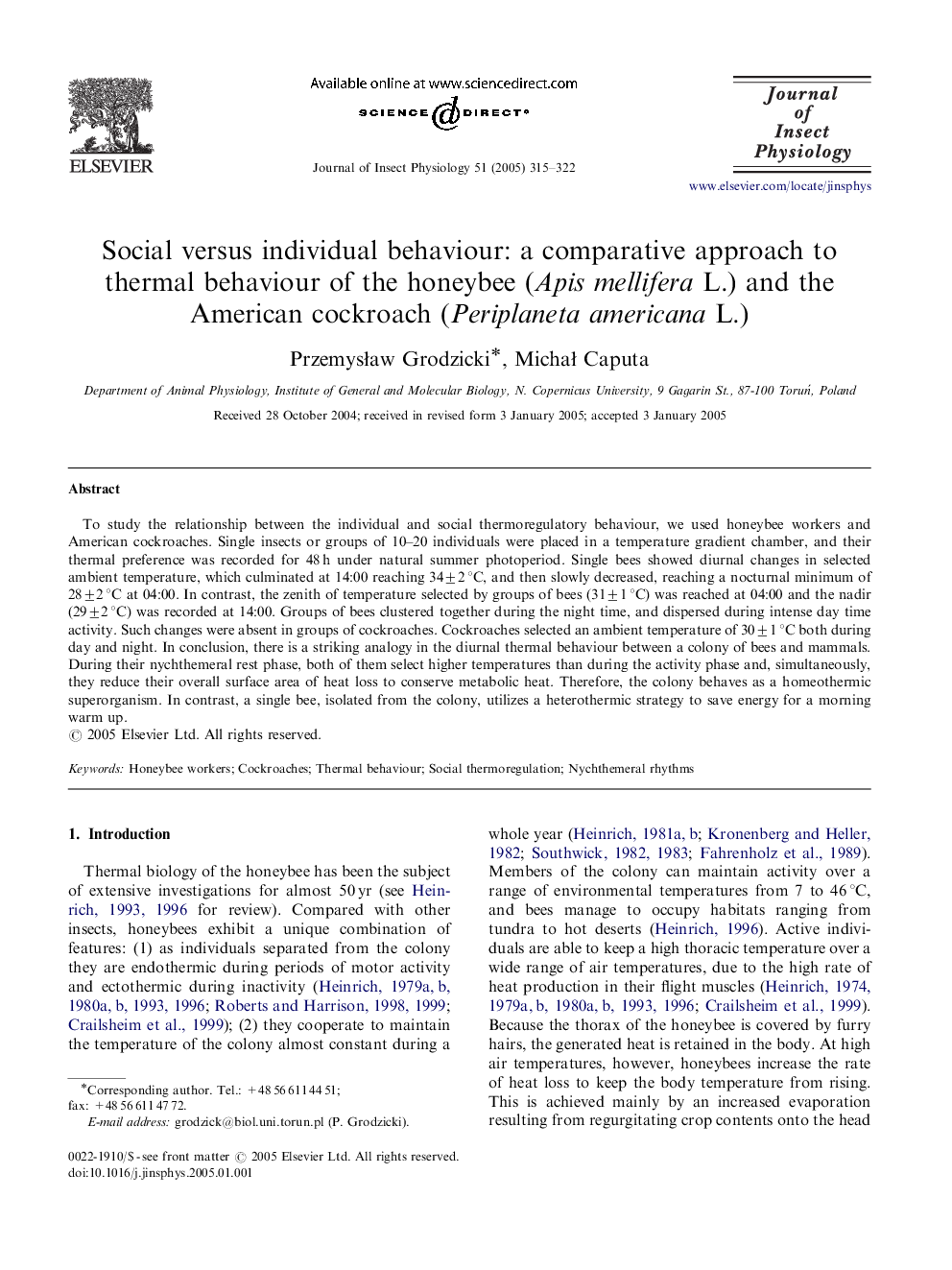| Article ID | Journal | Published Year | Pages | File Type |
|---|---|---|---|---|
| 9147622 | Journal of Insect Physiology | 2005 | 8 Pages |
Abstract
To study the relationship between the individual and social thermoregulatory behaviour, we used honeybee workers and American cockroaches. Single insects or groups of 10-20 individuals were placed in a temperature gradient chamber, and their thermal preference was recorded for 48 h under natural summer photoperiod. Single bees showed diurnal changes in selected ambient temperature, which culminated at 14:00 reaching 34±2 °C, and then slowly decreased, reaching a nocturnal minimum of 28±2 °C at 04:00. In contrast, the zenith of temperature selected by groups of bees (31±1 °C) was reached at 04:00 and the nadir (29±2 °C) was recorded at 14:00. Groups of bees clustered together during the night time, and dispersed during intense day time activity. Such changes were absent in groups of cockroaches. Cockroaches selected an ambient temperature of 30±1 °C both during day and night. In conclusion, there is a striking analogy in the diurnal thermal behaviour between a colony of bees and mammals. During their nychthemeral rest phase, both of them select higher temperatures than during the activity phase and, simultaneously, they reduce their overall surface area of heat loss to conserve metabolic heat. Therefore, the colony behaves as a homeothermic superorganism. In contrast, a single bee, isolated from the colony, utilizes a heterothermic strategy to save energy for a morning warm up.
Related Topics
Life Sciences
Agricultural and Biological Sciences
Insect Science
Authors
PrzemysÅaw Grodzicki, MichaÅ Caputa,
